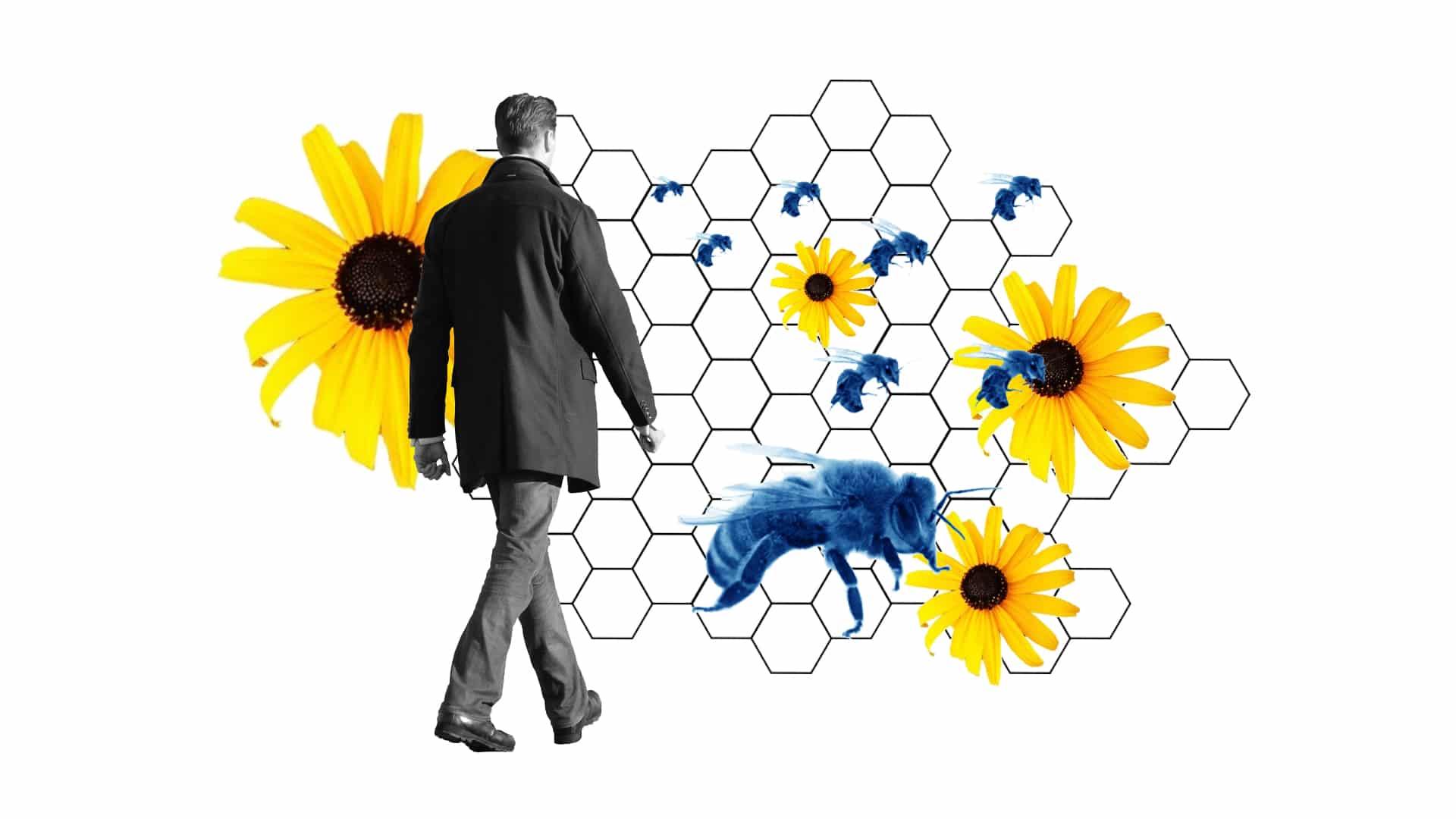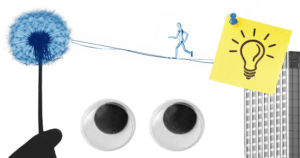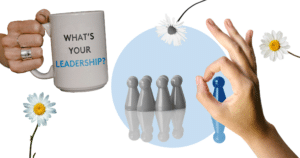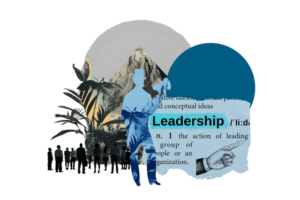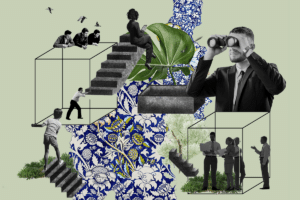Think of pollination: through this activity, bees ensure both their survival and that of the entire ecosystem, ensuring, for example, the maintenance of biodiversity. They are social insects: they live in very large colonies, organized in very well-defined hierarchies, in which everyone plays his part. To reproduce and survive, bees accumulate as many supplies as possible during the good season to get through the winter. In addition, these insects are linked to each other by very deep and solid bonds, so much so that each bee is willing to sacrifice itself for the good of the community.
The flawless organization of bees is thus strongly based on collaboration and long-term vision: they are capable of a broad perspective, working properly for the future – and not only for their own and the colony’s sake. The behaviors through which they ensure the well-being of their species have a positive impact on the external environment, making a difference to the well-being of the entire Earth.
At the opposite end of the spectrum, locusts are commonly depicted as a swarm of voracious insects that cover entire lush fields, invade them and devour them, leaving them bare and dry and compromising the survival of other species. Unlike bees, these insects have a predatory attitude, so to speak, of “everything at once”.
We can think of these two types of animal behavior as two contrasting styles of leadership:
- that of bees builds community, fosters collaboration between parties and promotes long-term value;
- Locust leadership, on the other hand, considers only short-term interests, immediate returns, and does not see tomorrow but only today.
Research shows that bees are very sustainable insects, are more likely to achieve higher levels of performance and even very complex goals, and are more socially responsible than locusts. If we move from the animal world to the world of business, to the leadership of bees, we can assimilate the concept of “sustainable leadership“. So leaders, just like bees, if they want to act sustainably should view their company as part of a much larger community, transforming their goal into one of promoting sustainable growth – in time and space.
Sustainable leadership is a concept that is not exactly new, but one that, especially in recent years, has been gaining momentum in the business, becoming an emerging field of study. Numerous studies point out that climate change, resource scarcity, economic integration, cultural conflicts, human migration, technological innovations, and political instability have created the conditions for organizational leaders to pay more and more attention not only to the inner workings of their policies but also to the global, external impact. What is changing is that until now implementing a sustainable business model has been, so to speak, a free choice, the time is approaching when it will be a forced choice for companies that want to continue to survive and produce value.
With this in mind, back in 2000, the United Nations signed the so-called Millennium Development Goals. Applicable to organizations from all sectors and all over the world, these eight macro-goals expressed an interest in issues such as poverty, hunger, disease, infant mortality, universalization of primary education, gender inequality, and environmental degradation. The intention was to concretely promote global awareness, political accountability, improved metrics, social feedback, and public pressure.
Several organizations, such as SAS Institute, Google, Shell Oil Co., NEC Corp., and Procter & Gamble Co. have already developed such business models, without sacrificing profitability, revenue growth, and indeed increasing performance levels. They are already seeing the very positive economic, social and environmental impact of these sustainable business strategies.
One example that can concretely inspire is BMW, which has demonstrated how not only does this approach bring good results, especially in difficult times, but also how with time and training it can be normalized and radicalized into the DNA of the organization, making it part of the corporate culture.
In general, however, until recently the most popular conceptualizations related to “effective” leadership revolved mostly around internal organizational measures, such as staff job satisfaction, commitment, organizational citizenship behavior, and the performance of individuals and the company as a whole. As Hallinger and Suriyankietkaew write, all of these conceptions view organizations as “closed systems” within themselves.
It is primarily in this sense that the change of perspective must take place: as Senior Business Coach Anja Puntari says, in today’s world, organizations must necessarily be treated as open systems, as entities that do not exist in isolation, but are strongly interconnected and interdependent, whose impact is therefore not limited within their boundaries, within the physical and organizational perimeter, but rather “goes beyond the borders” involving the entire surrounding environment.
The idea of “sustainable leadership” is therefore part of this movement towards a broader conceptualization of the goals and responsibilities of organizations and their leaders. In this regard, McKinsey has recently stated that to overcome the challenges that the digital future imposes and learn how to seize the opportunities, leaders are called to rethink the way they operate: among the 5 priorities of CEOs, classified as a must for the future, ‘sustainability’ is considered in this broad sense.
But what exactly is sustainability? What behaviors required of leaders are properly sustainable?
Sustainability skills and behaviors
The internationally recognized definition of “sustainability” dates back to 1987, proposed by the World Commission on Environment and Development of the UNEP (United Nations Environment Program), in which sustainability is defined as “development that meets the needs of the present generation without compromising the ability of future generations to meet their own needs”.
In general, building on this central concept, sustainable leadership reorients the mission of organizations, toward multiple indicators of success that go beyond the traditional measures of staff satisfaction, commitment, and task performance, and expand to consider social and environmental consequences.
We can outline some crucial elements in defining sustainable leadership by identifying its defining ingredients:
- Emphasis on leadership, rather than a unified leader: the focus becomes collaboration; those who hold the role of “leader” in the organizational hierarchy lead ‘with’ rather than ‘over’ others.
- Long-term vision, resulting in forward-looking decisions that are not solely oriented toward maximizing immediate profit.
- Broader goals that connect organizations to society.
- Ethical behavior, both in dealing with employees and contractors and with society at large.
- Social responsibility of leaders and organizations.
- Ability to innovate, to embrace change in general, and in particular to seize the endless opportunities of digital.
- Systemic change.
- Stakeholder engagement.
- Stakeholder capacity building: valuing and growing talent is functional not only for engagement and collaboration but also for retaining and attracting them, which is crucial to ensure the long-term viability of the organization.
This requires the development of specific skills. It is essential to be open to the new and to change, assuming an innovative attitude: listening to the external context, to understand its peculiarities and needs, but also to oneself and to others to encourage the involvement of all, the team spirit and thus cooperation. Thus, the development of emotional intelligence, resilience, and flexibility become central, making oneself available to abandon old models and seize this as an opportunity to grow. More and more, then, activate creativity in oneself and one’s collaborators, creating the conditions for each to make a full contribution and express themselves freely.
The key is to take a broader view, and this must occur at all levels, but be stimulated first and foremost by the leadership figures: sustainable leadership is implemented through collective or distributed efforts that aim to shape organizational culture, redesigning work systems to achieve new goals.
As researchers Galpin and Whittington write, the path to successful sustainability efforts depends on both “macro” and “micro” organizational factors. The combination of these factors provides management with a powerful approach that engages the workforce in sustainability efforts, resulting in positive sustainability performance at the employee and organizational levels.
In general, sustainability is part of a broader discussion: it has to do with the ability to keep up with the pace of change and, therefore, is applicable all the time, in every era. In today’s scenario, however, an “ecological” consideration is more necessary than ever: to generate the greatest possible value, we must implement behaviors whose outcome contributes both to our well-being and to that of the systems of which we are part, just like bees.
